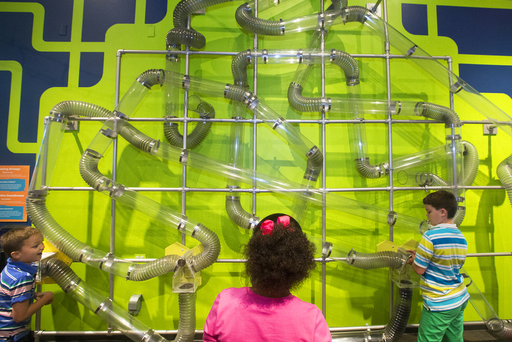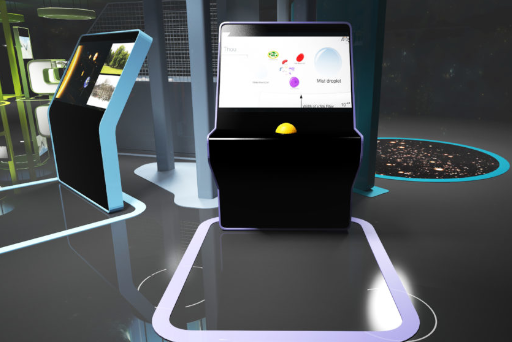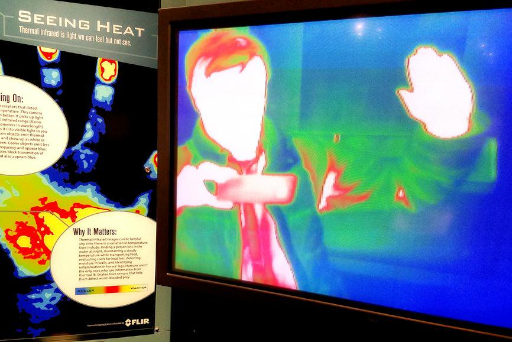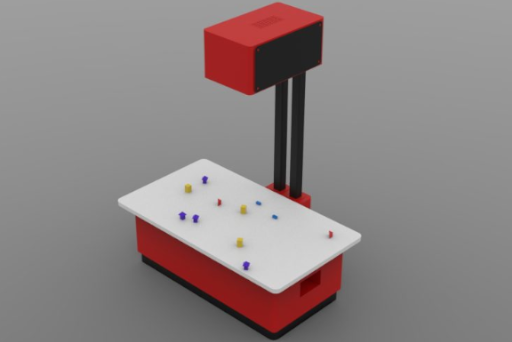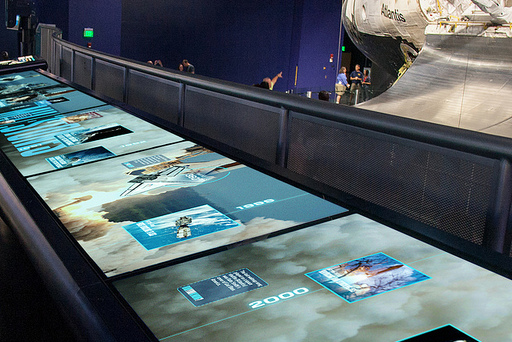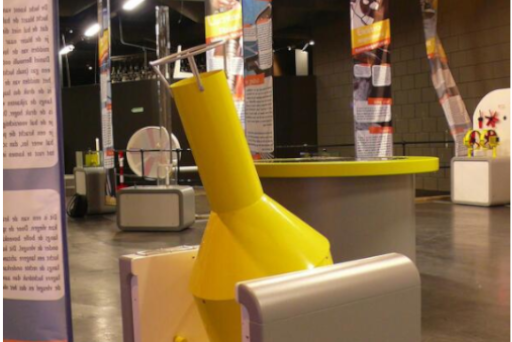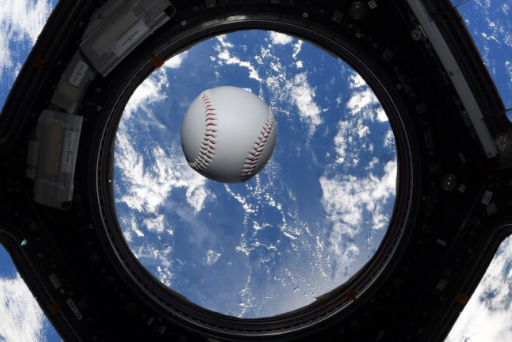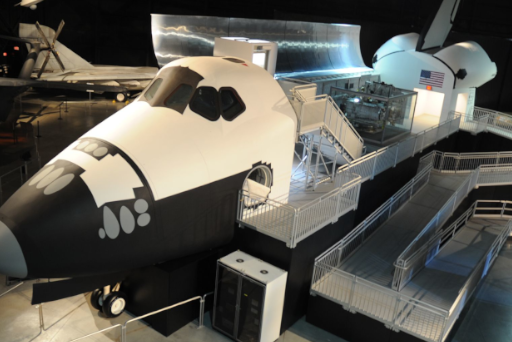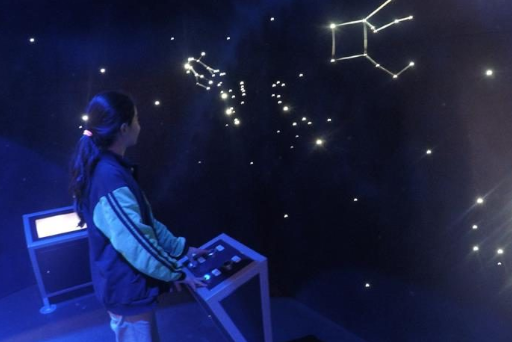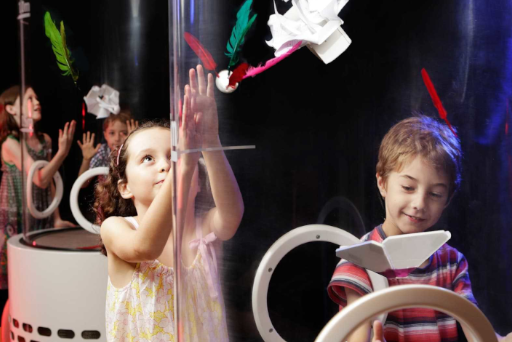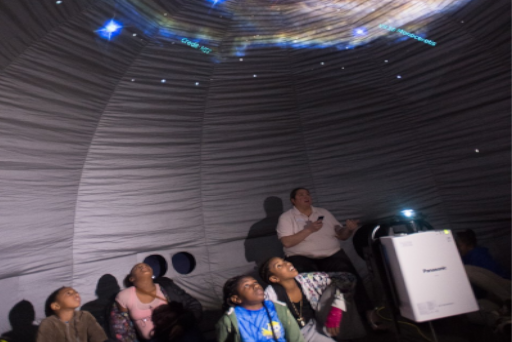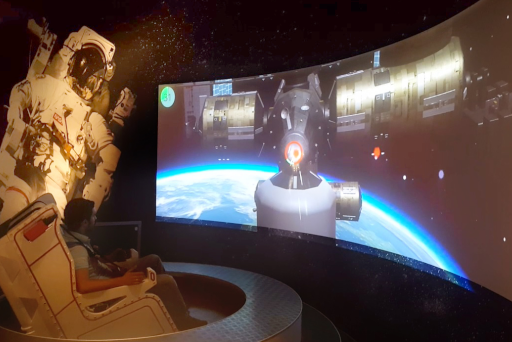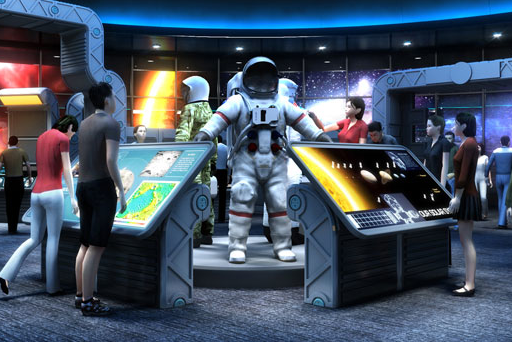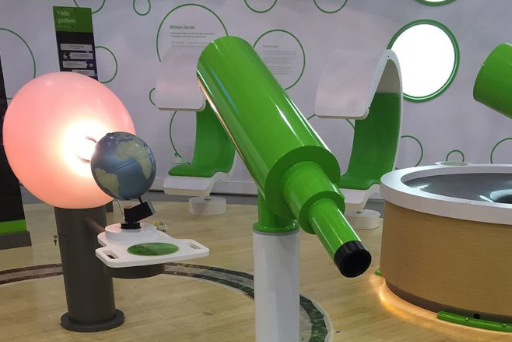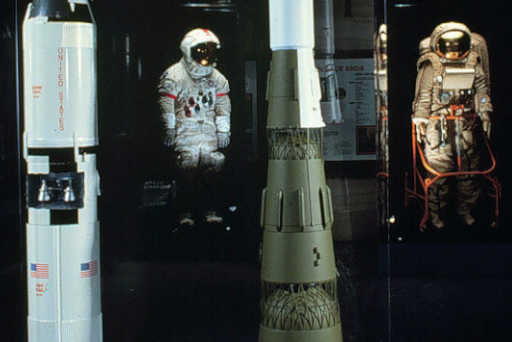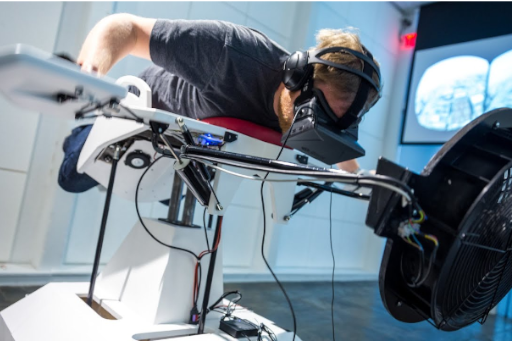Air Tubes
Air Tubes exhibit lets visitors place a ball or scarf into slots and watch as it spirals through clear tubes and finally shoots out of the exit slots. https://sebaexhibits.com/wp-content/uploads/2020/12/Awesome-Air-Tubes-Exhibit.mp4
How Big is the Universe?
In How Big is the Universe? exhibit, using a trackball, visitors make a journey from subatomic particles to the largest picture of the universe while comparing their sizes on a projected wall or screen.
Infrared Camera
At the Infrared Camera exhibit, an infrared camera detects the heat radiating from warm objects and projects it on a big screen, allowing visitors to see what’s hot (and not) about them and the other visitors and objects in their surroundings. https://sebaexhibits.com/wp-content/uploads/2020/05/Infrared-Camera.mp4
AR Mars Colony
With AR Spacebox exhibit, visitors create their virtual planet, Mars by placing given objects on the table. As visitors place more objects on the table colonies, rockets, vehicles etc. show up. According to the given instructions appeared on the table, visitors move the objects to create a sustainable colony.
Space Exploration Wall
On a projected interactive wall decorated with space related embossed graphics, visitors observe human beings’ space journey throughout time.
Bernoulli Blower
Bernoulli Blower exhibit illustrates Bernoulli’s Principle. Visitors observe how air moving at high speed has lower pressure than still air. Upward force from the air stream keeps the ball aloft. The air blowing around the ball creates a pocket of low pressure. When the ball moves to the side of the pocket, the higher pressure…
Read more
Earth Orbit
Earth Orbit exhibit lets visitors to observe the Earth from the International Space Station of NASA.
Icy Bodies
With Icy Bodies exhibit, in a specially lighted water pool, small parts of dry ice are dropped and they careen around simulating the movement and appearance of comets.
Space Station
With this replica of an international Space Station exhibit, visitors experience how astronauts feed, sleep, make their toilet, control the space station and communicate with Earth.
Space Shuttle Simulator
With this replica of a Space Shuttle Simulator, visitors experience a space flight from Earth to a planet.
Rocket
In Rocket exhibit, visitors push a button to pump air into the rocket and pressurize it to the maximum. After there is sufficient pressure in the rocket, visitor pushes the fire button and the count-down begins. After the completion of the count-down, the rocket launches with an amazing speed.
Constellation Wall
In Constellation Wall exhibit, visitors select a constellation at a console via push-buttons. The selected constellation lights up in the environmental star panels.
Wind Tubes
With Wind Tubes exhibit, visitors are encouraged to test their designs and compare their results with others creating a collaborative learning experience. Visitors place their objects, turn on the fan if it is off, and watch their objects float and fly through the acrylic tube. Visitors can also vary the speed of the fan by…
Read more
Planetarium Dome
In the Planetarium Dome, visitors travel through a world of knowledge that includes astronomy, geology, physical geography, and more. The exhibit inspires visitors to engage in a better understanding of the world around them. https://sebaexhibits.com/wp-content/uploads/2020/12/Moreheads-Mobile-Planetarium-Dome.mp4
Jetpack Simulator
Jetpack exhibit simulates the Manned-Maneuvering Unit developed and used by NASA. The simulation involves an astronaut’s experiences out of the spaceship getting around using the Jetpack. Visitors sit in the jet pack chair, which is placed over a 6-dof motion platform, and fasten a safety harness. They control the platform with joysticks placed on the…
Read more
Design Your Spaceship
With Design Your Spaceship exhibit, visitors design their own spaceships on a touchscreen, give names and send them to planets in the Solar System to accomplish a specific mission. Visitors are able to share their spaceships in their social media accounts by using provided QR codes.
Digital Telescope
By using Digital telescope exhibit, visitors are able to view planets, stars, galaxies that are millions of kilometers away.
Rocket Models
With Rocket Models exhibit, 1:144 scaled realistic rocket models such as Saturn V (NASA, 110.6 m), Falcon Heavy (SpaceX, 70 m), and Ariane 5 (ESA & CNES, 52 m) are displayed in a specialty lighted acrylic case.
VR Flight
VR Flight exhibit is a bodies-on experience which visitors can flap their wings and fly over a virtual environment.
Flight of Birds
In Flight of Birds exhibit, visitors put on special accessories simulating birds’ wings on their arms. Then, they flap their arms like birds and they virtually fly on the screen. The exhibit also provides information about birds’ anatomies and aerodynamic structures.
